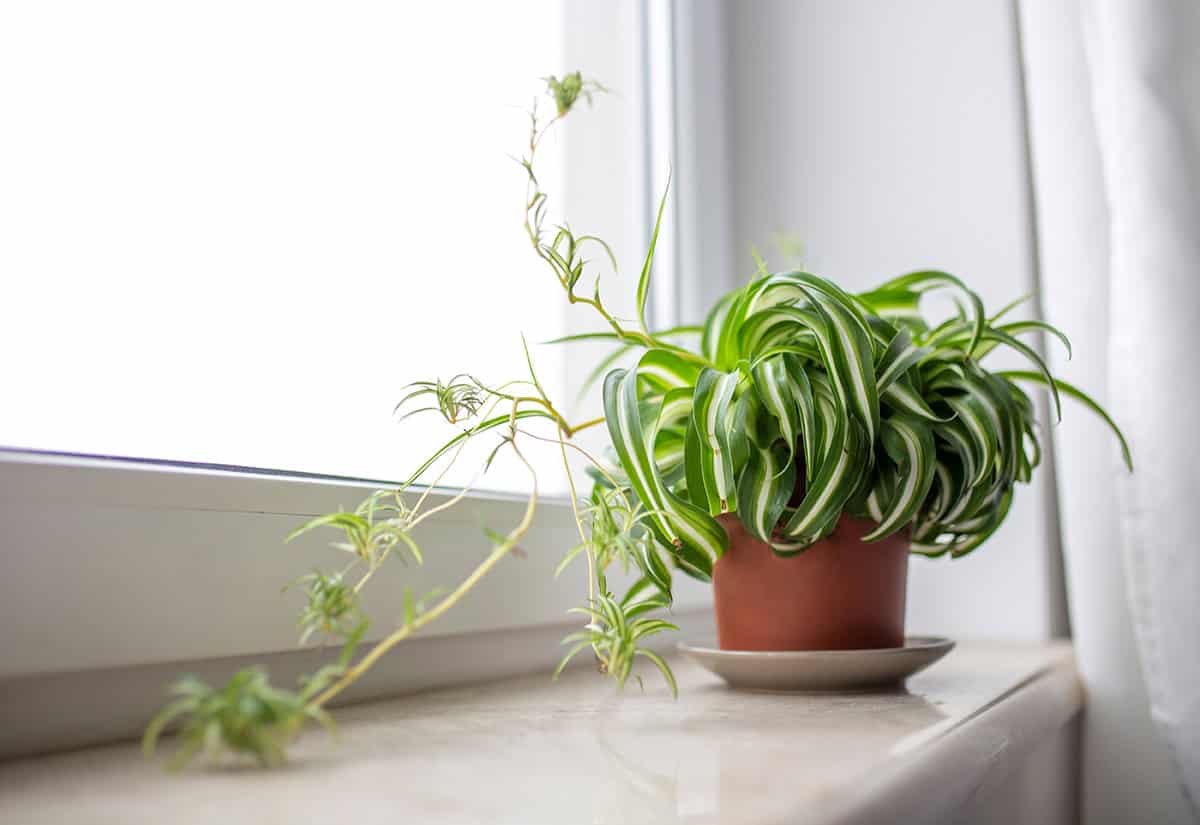Spider plants are one of the most popular houseplants, known for their easy care and striking appearance. You might wonder about the different varieties available. More than 200 species of Chlorophytum have dozens of varieties, offering a range of leaf patterns and colors.
Some spider plants have all-green leaves, although these are rare. Whether you want an eye-catching centerpiece or a resilient green companion, spider plants are an excellent choice for any home. Let’s go over 15 common types of spider plants you can grow right away.
Table of Contents
- Common Varieties of Spider Plants
- Chlorophytum Comosum ‘Vittatum’
- Chlorophytum Comosum ‘Variegatum’
- Chlorophytum Comosum ‘Bonnie’
- Chlorophytum Comosum ‘Hawaiian’
- Chlorophytum Comosum ‘Reverse Variegatum’
- Chlorophytum Comosum ‘Ocean’
- Chlorophytum Comosum ‘Green Orange’
- Chlorophytum Comosum ‘Atlantic’
- Chlorophytum Capense
- Chlorophytum Bichetii
- Chlorophytum Laxum ‘Zebra’
- Chlorophytum Comosum ‘Fire Flash’
- Chlorophytum Comosum ‘Mandarin’
- Chlorophytum Comosum ‘Curly’
- Cleome Hassleriana ‘Violet Queen’ (Purple Spider Plant)
Common Varieties of Spider Plants
Spider plants, known for their easy maintenance and adaptability, offer a variety of visual appeals. This guide delves into some of the most common varieties, highlighting their unique characteristics.
Chlorophytum Comosum ‘Vittatum’
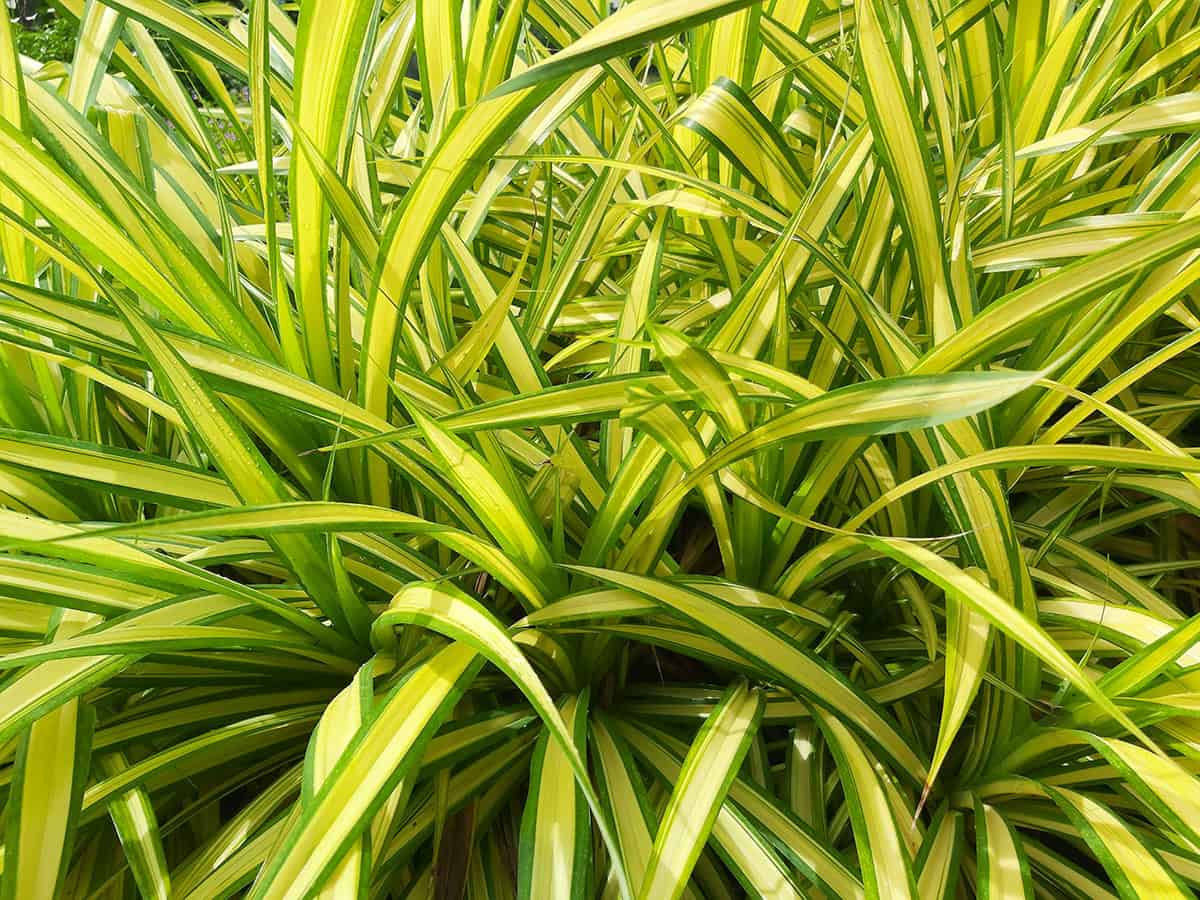
‘Vittatum’ is one of the most recognizable spider plant varieties. It features green leaves with a distinctive central white stripe. Ideal for both hanging baskets and pots, this variety grows quickly and forms numerous plantlets. ‘Vittatum’ thrives in indirect sunlight and prefers well-drained soil.
Chlorophytum Comosum ‘Variegatum’
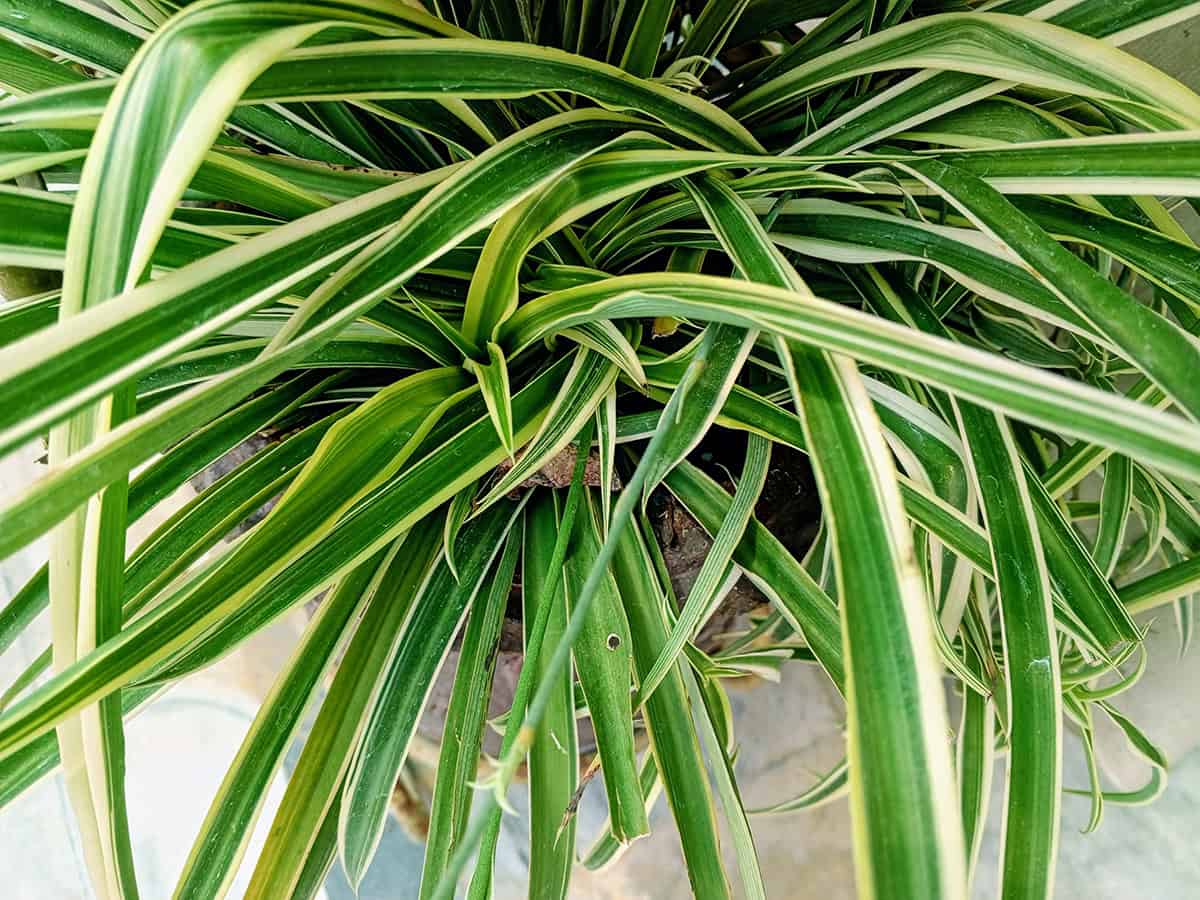
‘Variegatum’ has green leaves bordered with white edges. Known for its contrasting foliage, it adds aesthetic appeal to indoor spaces. Like ‘Vittatum,’ it grows well in medium light. This variety can tolerate periods of drought but prospers with consistent watering.
Chlorophytum Comosum ‘Bonnie’
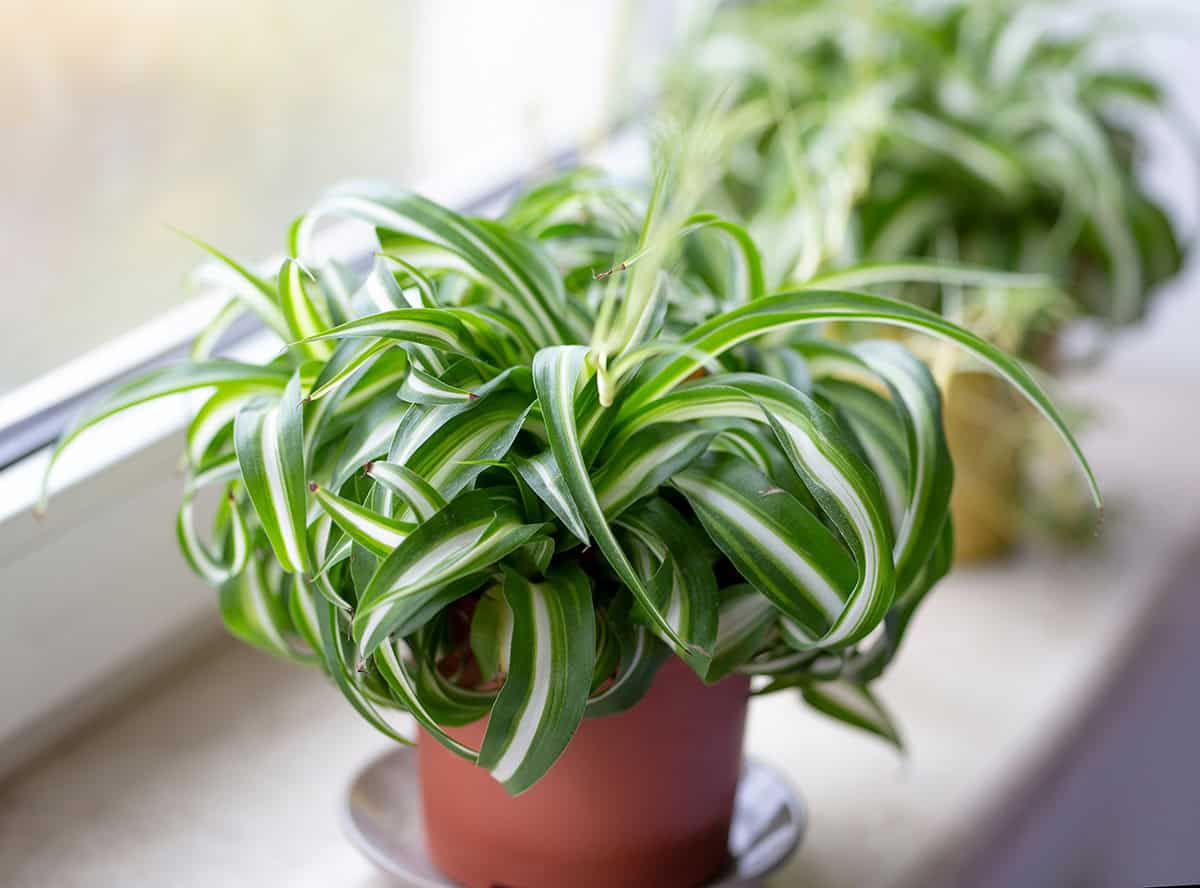
‘Bonnie’ is distinct for its curly leaves, giving it a unique appearance compared to other spider plants. The leaves have a similar color pattern to ‘Vittatum,’ with central white stripes. It is compact, making it suitable for smaller spaces. ‘Bonnie’ is often grown in hanging baskets to highlight its foliage.
Chlorophytum Comosum ‘Hawaiian’
‘Hawaiian’ is notable for its lush, dark green leaves and compact size. It often features light yellow or white variegation. This variety thrives in low to medium light and benefits from regular watering. ‘Hawaiian’ is perfect for tabletops or desks due to its smaller stature.
Chlorophytum Comosum ‘Reverse Variegatum’
‘Reverse Variegatum’ reverses the typical variegation pattern with green edges and a white center. It is vibrant and visually appealing. It prefers bright, indirect light and benefits from moist, well-draining soil. This variety can grow quite large, making it ideal for spacious areas.
Chlorophytum Comosum ‘Ocean’

‘Ocean’ features elegant arching leaves with white stripes on the margins. It is less common but highly valued for its striking appearance. ‘Ocean’ does well in indirect light and benefits from occasional fertilization. Ensure the soil remains consistently moist for optimal growth.
Chlorophytum Comosum ‘Green Orange’
‘Green Orange’ stands out with its bright green leaves and vivid orange stems. It adds a pop of color to any collection. This variety prefers medium to bright light and needs regular watering. Its unique coloration makes it a popular choice for enthusiasts.
Chlorophytum Comosum ‘Atlantic’
‘Atlantic’ is a less common variety with distinct green leaves and white margins. It requires similar care to other spider plants, thriving in indirect sunlight and well-drained soil. Its elegant foliage makes it a beautiful addition to any home.
Chlorophytum Capense
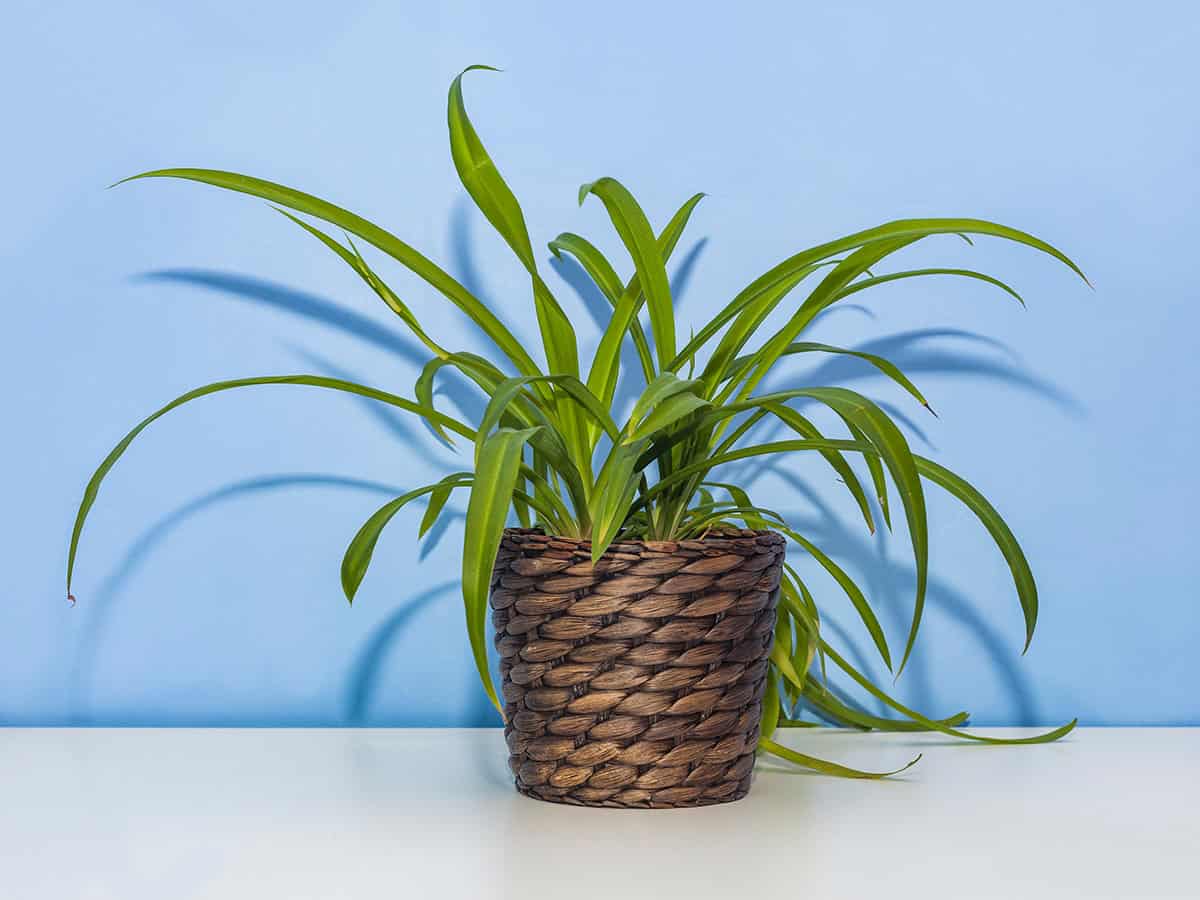
Chlorophytum Capense has solid green leaves without variegation. It is highly adaptable to various lighting conditions, including shade. This variety is more robust and less prone to pests. Its simplicity and durability make it a great choice for beginners.
Chlorophytum Bichetii
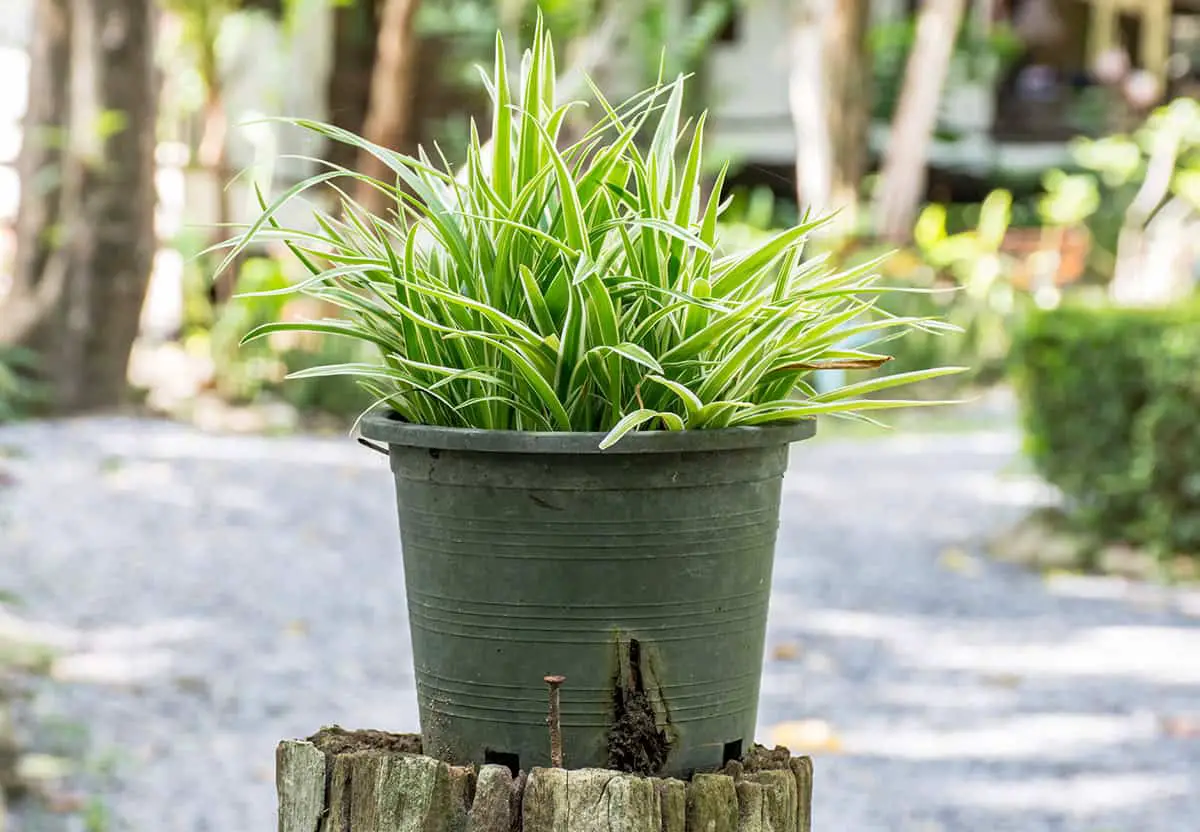
Chlorophytum Bichetii, also known as the Bichetii snake plant, features green leaves with white margins. It has stiffer foliage compared to other spider plants. This variety thrives in both low and bright light and is commonly used in landscaping.
Chlorophytum Laxum ‘Zebra’
‘Laxum Zebra’ presents narrow green leaves with white edges. It is compact and grows in clumps. This variety thrives in bright, indirect light and benefits from regular watering. Its striped leaves add a decorative touch to any indoor garden.
Chlorophytum Comosum ‘Fire Flash’
‘Fire Flash,’ also known as ‘Mandarin Plant,’ features broad, dark green leaves with orange stems and leaf bases. It thrives in low to medium light and prefers well-drained soil. This variety’s vibrant colors make it a standout in any plant collection.
Chlorophytum Comosum ‘Mandarin’
‘Mandarin’ has bright green leaves with orange stems, similar to ‘Fire Flash.’ It grows well in moderate light and needs regular watering. Its distinct coloration makes it an eye-catching houseplant.
Chlorophytum Comosum ‘Curly’
‘Curly’ spider plants have twisted, curly leaves that differentiate them from other varieties. They feature a similar color pattern to ‘Vittatum.’ This variety thrives in hanging baskets where their unique foliage can be displayed. Regular watering and indirect light are ideal.
Cleome Hassleriana ‘Violet Queen’ (Purple Spider Plant)
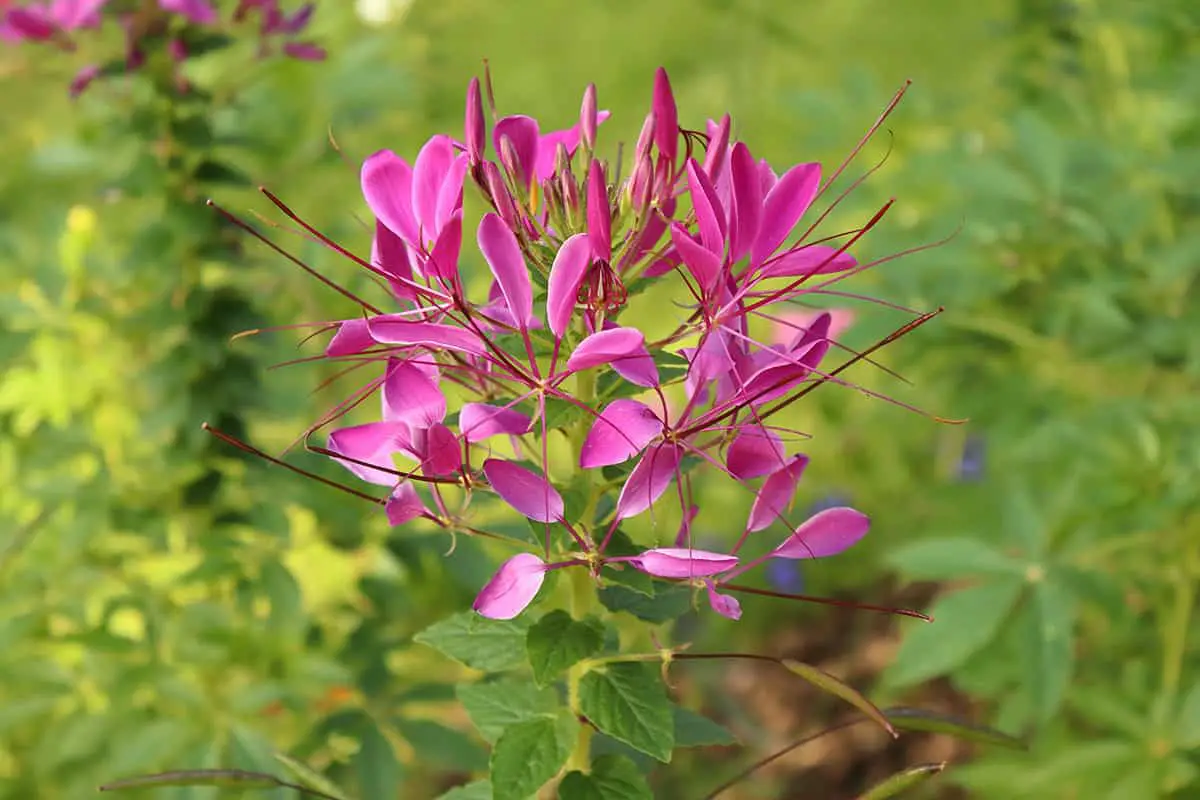
‘Violet Queen’ is often associated with spider plants due to its name, but it is not a true spider plant. It features purple flowers and grows as an annual. This variety prefers full sun and well-drained soil. Its striking purple blooms add a splash of color to gardens.
